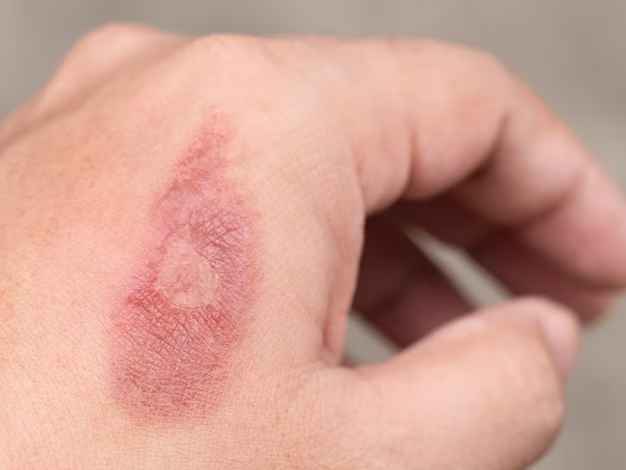- About Us
- Treatments
Skin Treatments
MenuMenuHair Treatments
MenuBody Treatments
Menu - Procedures
Aesthetics
MenuCosmetic Surgery
Menu - Training
- Products
- Gallery
- Contact Us
Your skin can get burned if you touch something hot by accident, like picking up a hot pan straight from the oven or if you get splashed with boiling water. Skin burns can also be caused by the sun, electricity, chemicals, and radiation.
When you get burned, skin cells die. When skin is burned, it makes a protein called collagen, to help heal burn scars. Scars are thickened, discolored spots that form on the skin as it heals. Some scars are only superficial and will eventually fade away on their own. At times, certain burn scars do not heal and stay permanently.
Burn scars can either be big or small. Scars from burns that cover a large proportion of visible skin can change the way you look.

Burn scars are of different types but they are segregated into three major categories, they include,
Burn scars are of different types but they are segregated into three major categories, they include,
Hypertrophic scars:
They have raised scars that may feel warm and itchy when touched. They may look red or pink, are thicker, and firmer, and have more blood vessels than normal scars.
Keloid scars:
Keloid scars seem elevated and sometimes sensitive to touch. They start pink or purple but change to a brownish-red colour as they age. Keloid scars keep growing past the edges of the wound.
Laser treatment for burn scars:
In the laser light treatment of burn wounds, blood vessels in the extra tissue are targeted by UV rays. This can help get rid of the bumps and redness that are associated with the scars.
Cryotherapy to heal burn scars:
Liquid nitrogen is used in this method to freeze the scars as they form. It can be used to soften keloid scars before they fully come out. Cryotherapy has been used to treat keloid scars with some positive results.
Skin grafts:
This is a type of reconstructive surgery in which a portion of skin from a healthy part of the body, like the things, is used to replace the scarred skin. Moreover, the physician may obtain healthy skin from a donor. The burned region is cleaned and then covered with fresh skin. The region gradually heals and becomes smooth.
Flap surgery:
In contrast to skin grafting, in which the skin is removed without the blood supply, a flap is transferred along with the blood supply to cover the scar. This treatment contributes to the reconstruction of the scarred portion. Moreover, flap surgery yields excellent cosmetic results. In some cases, if the scars are on the hand you may need to undergo hand surgery to look more appealing.
Tissue expansion:
This method is often used in surgeries to fix things. In this procedure, a tissue expander, which is a silicone balloon, is put underneath the healthy skin and filled with a saline solution to make the skin look bigger. The tissue expander is taken out, and the burned area is covered with the skin that has been stretched.
Burns that aren’t too bad, should heal without causing any long-term issues. Deeper and worse burns can leave scars and lead to other problems, such as:
Book An Appointment